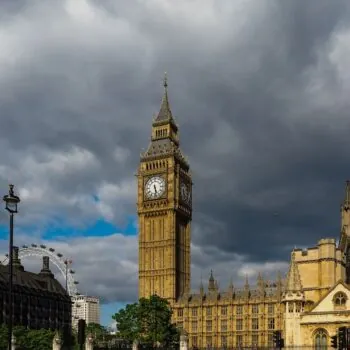A large share of excess winter deaths is attributable to the entirely preventable experience of living in a cold home. This has got to stop, argue E3G’s Pedro Guertler and National Energy Action’s Peter Smith.
As the UK experiences one of the harshest winters for several years, it is important to remember that this causes needless hardship, places health at risk and, in some cases, leads to premature death. It is a sad fact that in a modern country like Britain even during milder weather the cold kills. As well as the devastating impacts cold homes have on their occupants lives, this problem extends to all of us; queues at GPs and A&E as well as delaying the discharge of vulnerable patients from hospital. The authors of this paper argue this entirely preventable situation has to stop.
The research presented in this briefing is based principally on the latest figures for excess winter deaths (EWD) and excess winter mortality (EWM) from the UK’s four nations, the last annual releases of which were published in October and November last year. In England and Wales the figures revealed the second highest numbers in five years. It is however important to investigate these trends over a longer time frame and so the new research provides context from the last few years’ worth of EWM as well as comparing the UK with its European neighbours. The briefing investigates the extent to which excess winter mortality is exacerbated by our homes not being as resilient to the cold as they should be – which makes them expensive to heat and keep adequately warm.
Key findings
- Our research finds the UK has the 6th highest long-term rate of excess winter mortality out of 30 European countries. Only Malta, Portugal, Cyprus, Spain and Ireland have a higher rate.
- Malta, Portugal, Cyprus and Spain come top because excess winter mortality looks at death rates in December through to March compared to the rest of the year. In colder countries – where the need to heat homes for them to be adequately warm prevails beyond these months – the effect of cold-related health risks on mortality can be severely underestimated relative to warmer countries. When the results are adjusted – accounting for length of the heating season beyond just the winter months – this more comparable measure of mortality in relation to cold conditions puts the UK second-worst (after Ireland) amongst 30 European countries.
- The UK experiences, on average, 32,000 deaths in each December to March period that are in excess of mortality rates across the rest of the year.
- Of these, 9,700 deaths are attributable to the avoidable circumstances of living in a cold home – about the same as the number of people who die from breast or prostate cancer each year.
- The majority of the 9,700 deaths, 6,900, are linked to the coldest 25% of homes in the UK, where vulnerable occupants – typically elderly people with existing health conditions – succumb to ill-health including cardiovascular and respiratory diseases and fatal trip and falls. This is comparable to the number of people who die each year from alcohol-related causes or high blood pressure.
- Alongside this, approximately 3,200 excess winter deaths are linked directly to people experiencing fuel poverty: that is when low incomes and high, or relatively high, energy bills combine to make a warm home unaffordable. This also leads to poor mental health such as chronic depression and in many tragic cases suicide. Fewer people die each year from drug misuse or skin cancer.
- Tackling cold homes as a contributor to excess winter mortality brings multiple benefits and is already recognised as a priority by the National Institute for Health and Care Excellence. NICE states that excess winter deaths attributable to cold homes are avoidable; that these deaths are just one part of a story that encompasses opportunities to improve public health while saving the NHS £1.36bn in England alone. This estimated saving currently excludes relieving pressures on social care services and NICE also notes that there are further fuel poverty and climate change benefits to fixing cold homes.
Given that alongside NICE, the National Infrastructure Commission now recognises energy efficiency improvement as a top infrastructure priority for achieving low- cost, low carbon energy, there is an even stronger imperative to fix the cold homes public health crisis. As well as leveraging private investment from green finance, utility providers, energy networks, home owners and landlords; the UK Government also needs to support the strong case for the re-introduction of adequate central investment in residential energy efficiency. The most appropriate long-term funding stream is public infrastructure capital – as opposed to revenue expenditure – which must be made available for this vital area.
The authors note the Department for Business, Energy & Industrial Strategy (BEIS) must commit to stronger regulations, addressing key gaps in existing provision, with HM Treasury needing to commit in Budget 2018 to trialling new area-based approaches and building the strong case for adequate investment overall to bring the approach to nation-wide scale by 2022. In the short-term, this will require BEIS to enhance co-operation from HM Treasury and other Government departments such as the Ministry of Housing, Communities & Local Government (MHCLG) and the Department of Health & Social Care (DHSC). All of the UK Government must be committed to this cause to realise the full benefits.
By 2022, the UK must be seeing area-based schemes improving our housing stock in every part of the country if we are to meet both fuel poverty and carbon emission reduction commitments. Beyond ending the individual suffering caused by cold homes, delivering energy efficiency on this scale would contribute towards achieving other UK Government objectives; a successful industrial strategy, supporting small business growth in every region and achieving carbon emissions reductions. In turn, this will also help improve local air quality, reduce health and social care costs and provide real benefits to households who are struggling financially.
Download related documents
- Briefing Paper, Cold homes and excess winter deaths
- Joint E3G and NEA press release, UK has sixth highest rate of excess winter deaths in Europe


